Traditional Braces – Levittown, PA
The Tried-and-True Path to a Straighter Smile
Having overly crowded teeth or a severe bite misalignment can impact both your appearance as well as your oral health. It’s harder to thoroughly brush and floss crooked teeth because you can’t always reach all surfaces, meaning you’re more prone to develop tooth decay or gum disease. Plus, alignment issues can lead to TMJ (temporomandibular joint) disorders that cause a sore, stiff, or locked jaw. Fortunately, Dr. Aieman Jazaierly can resolve these dilemmas with traditional braces. If you think your child might benefit from the tried-and-true path to a straighter smile, feel free to contact us to schedule a consultation or request additional information.

Why Choose Happy Teeth Pediatric Dentistry and Orthodontics for Traditional Braces?
- Flexible Financing Available
- Compassionate, Board-Certified Experts
- Advanced Technology to Enhance Patient Comfort
How Do Traditional Braces Work?
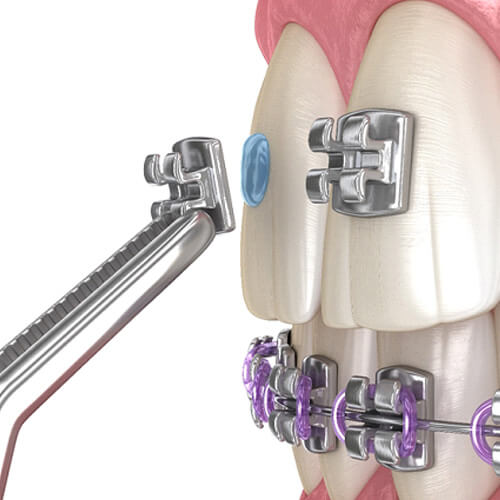
We tend to think of our teeth as permanent fixtures that don’t move, but they’re attached to the jaw by ligaments that allow a certain capacity for movement. Traditional braces take advantage of this with metal brackets bonded to the front of each tooth. These are connected by wires to exert gentle, consistent pressure to shift teeth into their ideal positions. This usually takes 12 to 24 months to complete, though only your child’s orthodontist can let you know a realistic timeline based on their unique circumstances.
What Orthodontic Issues Can Braces Fix?

Although more recent advancements in dental technology and materials have led to alternatives to metal braces, they remain in demand because they can handle problems that other options can’t. They’re safe for patients of all ages and are an incredibly versatile solution that can address:
Bite Misalignment

If your child’s teeth don’t meet where they should when they close their jaw, then they may have an overbite, underbite, or crossbite. This can lead to uneven wear and tear that leads to decayed or damaged teeth. Plus, it can cause or worsen painful TMJ problems. Traditional braces are a go-to solution to remedy these issues.
Crowded & Crooked Teeth
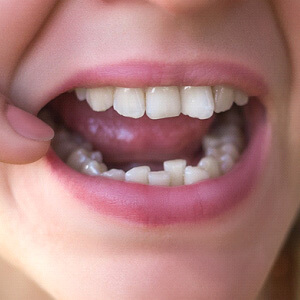
If your little one’s teeth are severely overcrowded, they’ll push each other out of alignment vying for space. The result is an uneven smile that can leave them feeling self-conscious. In addition to that, they’ll also be more likely to get cavities or gingivitis because it’s harder to brush all sides or floss between them. Traditional braces have the strength and durability to correct even extreme cases requiring additional torque.
Gapped Teeth

Gaps in your child’s grin can put a dent in their self-image as well as pose oral health risks. Bits of food that they eat are more likely to get wedged in between teeth which attracts harmful bacteria. This contributes to tooth decay and gum disease. Traditional braces can pull their teeth together so that they can look and feel their best.
Caring For Your Braces
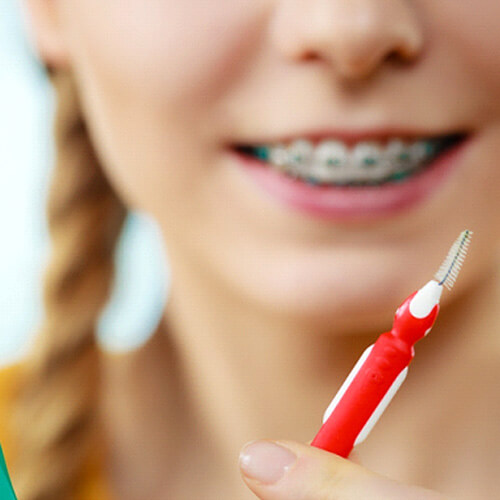
Braces can’t do their job if they’re damaged, so caring for them properly is imperative to helping your child complete their treatment on time. Some tips for keeping them in good condition include:
- Maintaining consistent oral hygiene habits with your child at home. They’ll need to continue to brush and floss their teeth twice daily to keep their mouth clean.
- Following the provided dietary guidelines and restrictions. The metal brackets can be brittle so try to avoid giving your child anything overly hard, crunchy, sticky, or chewy.
- Wearing a mouthguard if they play contact sports to protect both their braces as well as the soft tissues of their inner lips and cheeks.
- Keeping up with regular visits to their orthodontist every 6 months. This helps them monitor your child’s progress, make adjustments, and keep their teeth clean throughout treatment.
Understanding the Cost of Traditional Braces

Every patient’s smile is unique, which is why it’s difficult to provide an accurate cost estimate for orthodontic treatment. Since there is no one-size-fits-all answer for traditional braces in Levittown, you’ll need to schedule a consultation for your child with our team. Following the appointment, we’ll outline the expected treatment costs. In the meantime, you can review the following information to get a better idea of what to expect.
Factors That Affect the Cost of Traditional Braces
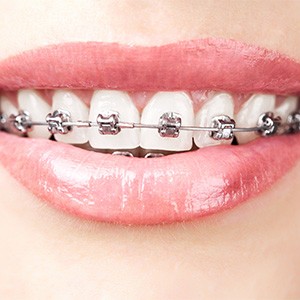
The average cost of traditional braces for children can range from $3,000 to $7,000. Of course, the final price is influenced based on the following factors:
- Extent of misalignment. Your child’s treatment timeline may be longer than average if their teeth need to move a greater distance. As a result, this can incur higher costs.
- Length of treatment. Longer treatment is typically more expensive as it involves more routine checkups, adjustments, supplies, etc.
- Number of follow-up appointments. If your child’s braces need to be adjusted or tightened every few weeks based on their progress, this can lead to higher costs.
- Treatment compliance. Closely following our treatment instructions can help keep your costs in line. Otherwise, your child may need additional supplies (like rubber bands) to stay on track. This can extend the treatment timeline.
Professional Braces vs. “DIY” Braces: Which Costs More?
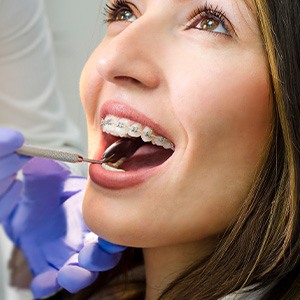
You may be tempted to cut corners and opt for a “do-it-yourself” approach. While this might seem like a good way to save money, you’ll likely end up paying more than anticipated by causing serious issues that need to be addressed by an orthodontist. Trends that encourage you to straighten teeth with household and over-the-counter items (i.e., fishing lines, earring backs, superglue, etc.) will only spell disaster for your wallet.
Professional supervision from a qualified orthodontist is essential. Otherwise, you could accidentally shift your child’s teeth in the wrong direction or even throw off their jaw alignment. Save yourself money and hassle by visiting us for traditional braces from the start.
Does Dental Insurance Cover Braces?

Certain dental insurance plans offer coverage for orthodontic treatment, especially if it's needed for medical reasons, such as a misaligned jaw or chewing difficulties. However, some policies may only cover braces for individuals under 18. If your plan includes orthodontic benefits, it typically covers up to 50% of the cost, though this can vary depending on the specific plan. It's important to consult with your insurance provider in advance to understand your coverage.
Options for Making Braces Affordable
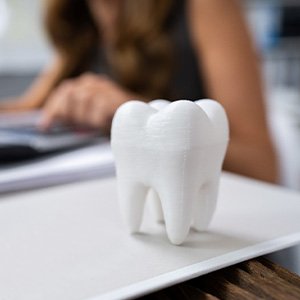
At Happy Teeth Levittown, we believe that top-quality braces shouldn't come with high out-of-pocket costs. That's why we offer interest-free monthly payment plans, allowing you to spread the cost of traditional braces over manageable, monthly installments instead of paying all at once. This makes it easier to fit traditional braces into nearly any budget! Contact our team for more information.
Traditional Braces FAQs
What Can You Not Eat with Traditional Braces?
Dietary restrictions are a part of the orthodontic treatment process. For good reason too; we want to reduce the chances of your child experiencing a broken bracket, loose wire, or another orthodontic emergency! We will provide you with some general guidelines when your child first gets braces, like avoiding foods that are crunchy, sticky, or overly chewy. However, it may take a bit of trial and error to find something that your child loves and is braces-friendly. Mashed potatoes, cooked carrots, mac and cheese, and pudding have been hits for many of our patients!
Can You Get Traditional Braces on Just the Top or Bottom Teeth?
There are some cases where single-arch treatment is possible. That said, it’s relatively rare. After all, moving just one row of your child’s teeth may negatively impact their bite. At their consultation, we will take a look at their teeth and bite to determine the best way to give them a smile that looks great, functions beautifully, and is healthy.
Do Traditional Braces Hurt?
Like many other children, your little one might be a bit nervous that getting braces will hurt. While some soreness from the movement of their teeth is to be expected, they can have peace of mind knowing that there are several ways to alleviate (and even prevent!) discomfort from surfacing. A few examples include eating soft foods and rinsing with warm saltwater.
What Happens After You Get Your Braces Off?
After we remove your child’s braces, it’s time to move onto the next step in the treatment process: retention. This is important because upwards of 50% of patients experience orthodontic relapse, which is when their teeth move back out of alignment. To prevent that, we will take impressions of your child’s teeth and have a custom retainer made. Once it arrives at our office, we will show them how to care for it and provide instructions on when to wear it.
How Long Do Traditional Braces Take?
Traditional braces have a reputation for taking a long time. However, the length of your child’s treatment plan will depend on a few factors, including the severity of the alignment issues and compliance with the guidelines we provide. The good news is that our Levittown dental team will be able to provide you with an estimate of your child’s orthodontic treatment at their consultation, so you’ll have a general idea of how long their teeth-straightening journey will be.
Can My Child Chew Gum with Traditional Braces?
In addition to avoiding extremely crunchy foods, your child should avoid chewing gum. If they want to freshen their breath, they can opt for a sugar-free mint instead.
Note: If your child is having a hard time cleaning their teeth and their braces, consider buying special oral hygiene tools, like interproximal toothbrushes. Products like these make maneuvering around the brackets and wires significantly easier.
